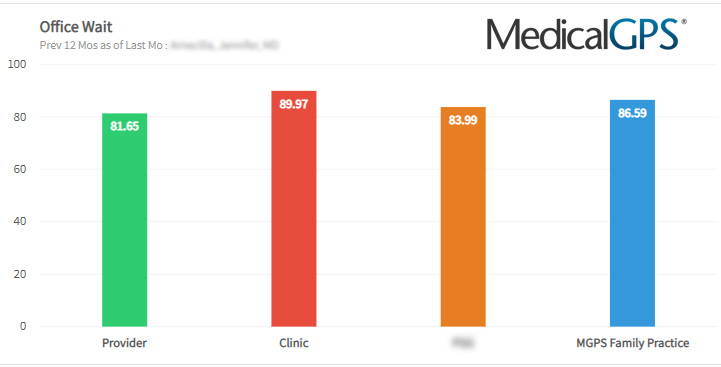- Waiting in the Office: It Doesn’t Have to be Called the “Waiting Room”
- Waiting for Test Results: Setting Expectations Makes the Difference
- Waiting for Call-backs: Acknowledge the Patient’s Inquiry
Waiting in the Office: It Shouldn’t be Called the “Waiting Room”
 First of all, if your practice still refers to the Reception Area as the Waiting Room, a good way to start the transition to a more patient-centered culture is to refer to the area where patients are received for check-in as something other than the Waiting Room. We recommend calling it your Reception Area. Whatever name your practice selects, choose a name that your team can support, and most of all, select a name that has a positive connotation that says goodbye to the Waiting Room.
First of all, if your practice still refers to the Reception Area as the Waiting Room, a good way to start the transition to a more patient-centered culture is to refer to the area where patients are received for check-in as something other than the Waiting Room. We recommend calling it your Reception Area. Whatever name your practice selects, choose a name that your team can support, and most of all, select a name that has a positive connotation that says goodbye to the Waiting Room.“the waiting-line experience in a service facility significantly affects our overall perceptions of the quality of service provided.”
“We must learn to influence how the customer feels about a given length of waiting time. ”
“Occupied Time Feels Shorter Than Unoccupied Time.”
- Patient Rounding within the Reception Area
- Provide Free WiFi
- Install televisions containing patient education and/or a review of provider BIOs
- Provide reading materials
- Provide bottled water and perhaps other refreshments such as a high-quality cup of coffee
- Ensure the Reception Area is neat and clean and encourages the patient to relax
- Encourage support staff to engage patients in meaningful conversation
- Login to M3-Patient Experience
- Click “Reporting”
- Click “Benchmarking”
- Select a Provider, the desired Date Range, and the Provider’s Specialty
- Scroll down to the bar chart titled, “Office Wait Time”
As depicted in the example bar chart below, the percentage of patients that selected the Top Box answer on the Office Wait Time question will display. Your selected provider in green, your practice’s aggregated percentage in red, your organization’s aggregated average in orange, and the MedicalGPS national Top Box average percentage in blue.

Waiting for Test Results: Setting Expectations Makes the Difference
- Ask the patient if their healthcare provider explained when they should expect their test results
- Reiterate what the patient was told by their healthcare provider
- If the patient was told, “Your test results should be back within two weeks”, have the patient place “Test Results Received?” on their calendar two weeks out from their visit date
- With compassion and empathy, ask the patient to resist calling the office prior to the date marked on their calendars
- Assist the patient with accessing their patient portal
The amount of time expended (read, waisted) can reach huge amounts as it relates to anxious patients calling the office prematurely to get test results. If you’re reading this article, you know exactly what I’m talking about. The good news is, it doesn’t have to be that way. With the right amount of compassionate patient education and empathetic support, patient expectations can be set appropriately by a loving/caring healthcare team like your team! I encourage you to support your team in their efforts to set patient expectations around receiving test results.
The importance of handling the patient’s telephone call in a timely manner, and returning the patient’s call on the same day cannot be overstated; the over all impact, both good and bad, can be measured throughout the patient experience continuum.
Waiting for Call-backs: Acknowledge the Patient’s Inquiry

- Collaborate with Providers and Staff to Develop written call-back guidelines and standards
- Set a same-day call-back cut-off time i.e. messages left after 4:00 PM will be returned the next morning by 10:00 AM
- Ensure call-back commitment window can be consistently achieved by your team
- Advertise the cut-off time as often as possible with every patient — setting expectations is key
- Assign each message to a staff member for follow-up
- Track & communicate message return compliance

Please let us know if you have comments or questions, and subscribe to our Email Updates so that you can be assured to receive Thinking Thursdays TIPs.
Thank you!
Jerry
Jerry L. Stone
Co-Founder/COO
MedicalGPS, LLC

